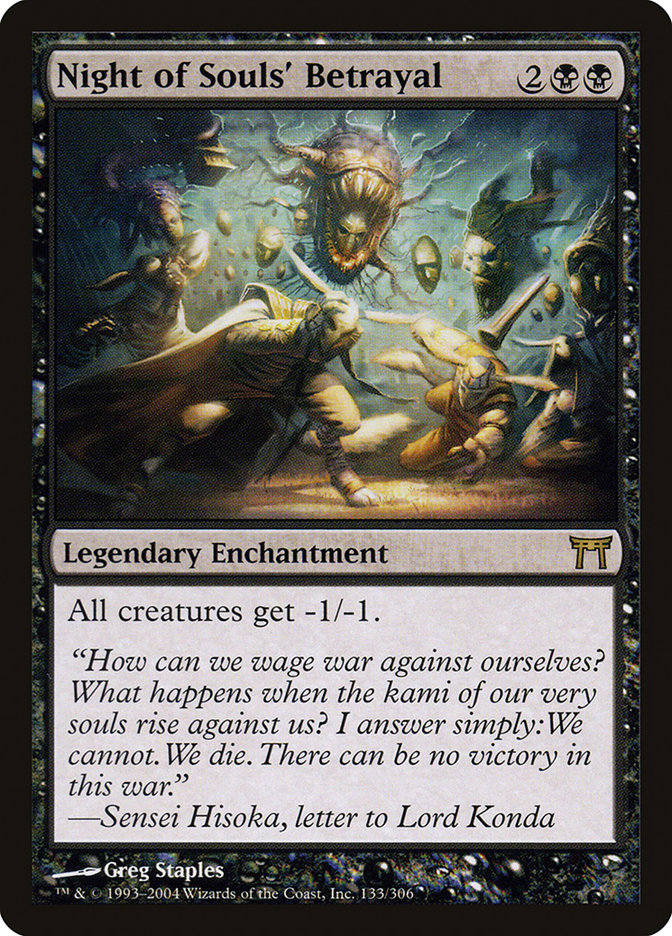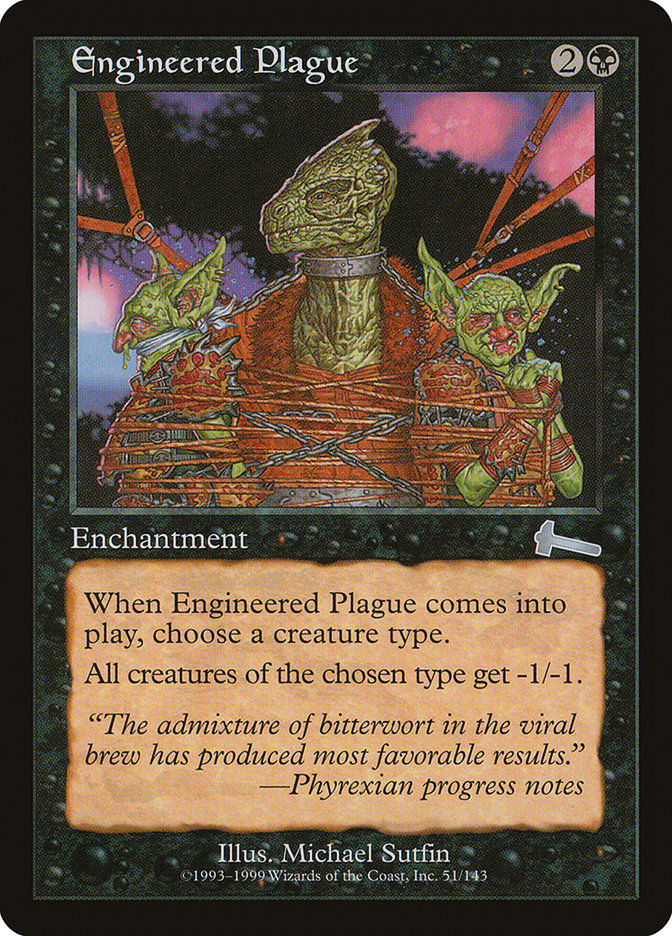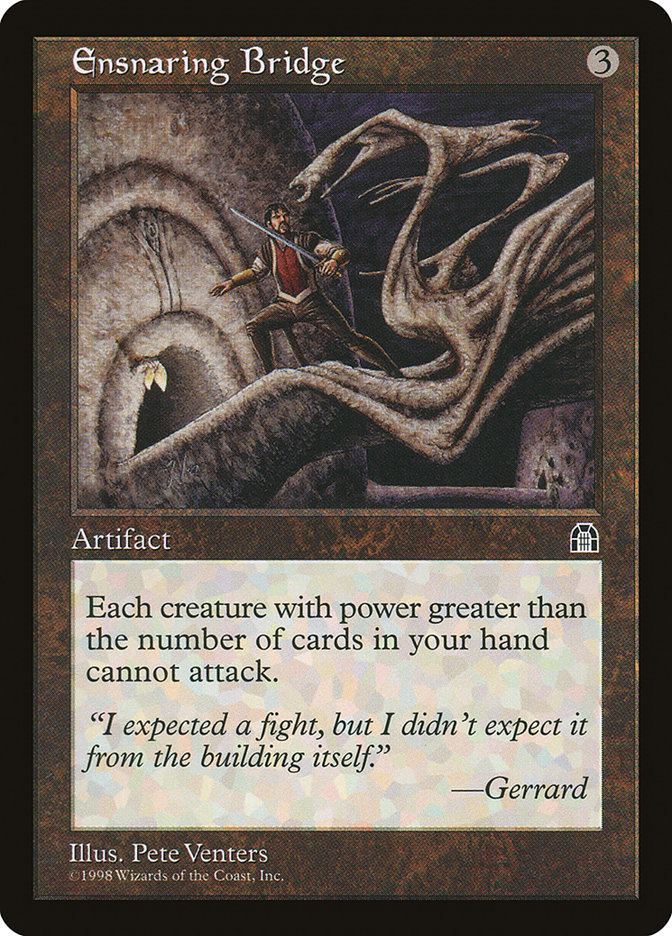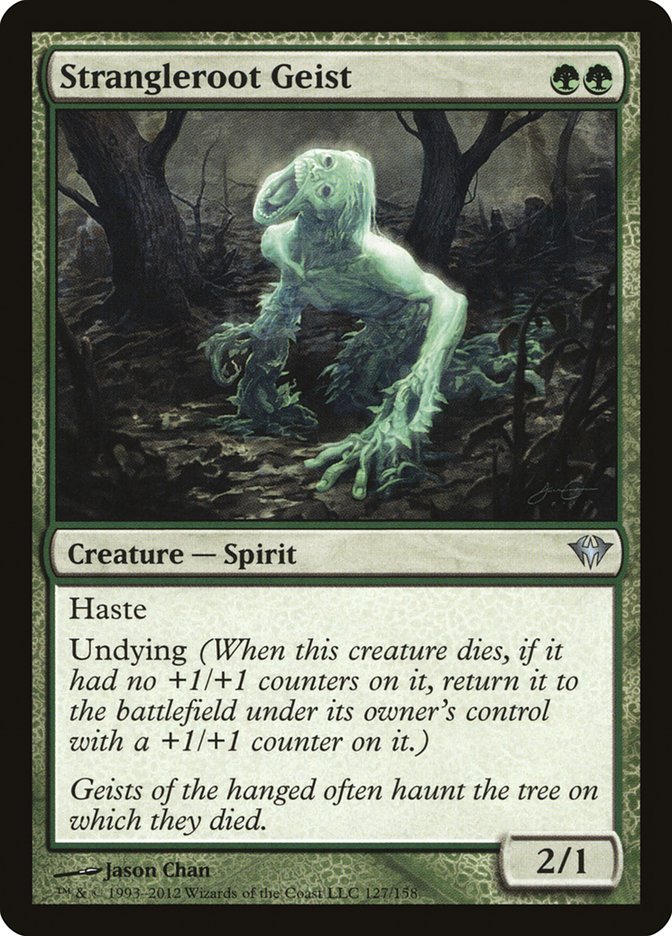High-impact cards are the key to rogue deckbuilding and an important secret of Magic in general. One of my first steps whenever I dive into a new format is to look for powerful, unique, and underused cards to take advantage of. In that sense, you can think of this as piggybacking on last week’s article on underused cards in Standard. However, today I’ll be using examples from outside the current Standard format.
Last weekend I placed 34th at the StarCityGames.com Invitational using Pox in Legacy. While I didn’t have a particularly standout finish (I was a little outside of the money), I was pleased to have developed a competitive Legacy deck that played so wildly differently from what the other top players had chosen. More importantly, I learned a lot about rogue deck construction. Here’s what I played:
Creatures (2)
Planeswalkers (4)
Lands (25)
Spells (29)

You’ll notice a handful of off-the-beaten-path cards. You might also notice an absence of certain cards that you might consider staples for a mono-black strategy. I did not include Dismember, Go for the Throat, Doom Blade, Toxic Deluge, Damnation, Perish, or many other cards that you might have expected to see in such a deck.
Night of Souls’ Betrayal & Engineered Plague
Night of Souls’ Betrayal is an example of a powerful, unique, and underused card in Legacy. It has a game-changing permanent effect that many decks are simply not prepared to handle.
Some of Legacy’s defining creatures include True-Name Nemesis, Snapcaster Mage, Vendilion Clique, Delver of Secrets, Lingering Souls, Mother of Runes, and Dark Confidant. Simply serving as a one-for-one answer to these cards is already a reasonable effect. However, Night of Souls’ Betrayal has the potential to wipe out several creatures at once and has the effect of "Extirpating" these creatures for the rest of the game, making them uncastable dead draws once the enchantment is in play.
To be fair, much of the card’s power comes from the fact that it cannot be played in just any deck, therefore ensuring its status as a surprising under-the-radar card that only the most expert Legacy players will have a plan against.
Pox seemed the perfect deck for this type of card. First, the games go long so you have a solid chance of finding a one or two-of card, and the permanent effect of the enchantment can give you a big advantage as things drag on. Second, you have an extensive suite of disruption to increase the chances that your heavy hitter cards will stick. In theory your opponent might decide that they want to save their Force of Will for Night of Souls’ Betrayal, but in practice what will happen when you cast Hymn to Tourach on them? Finally, Pox plays Dark Ritual, which gives the potential for explosive hard-to-beat draws when you draw Ritual in combination with your silver-bullet card.
But it’s not simply the case that I played Pox as an excuse to play with Night of Souls’ Betrayal. Night of Souls’ Betrayal actually corrects what would otherwise be one of the biggest weaknesses of Pox: swarm strategies. With so many Diabolic Edict effects, Pox is well equipped to handle a small handful of opposing creatures, whatever they might be. However, it’s unrealistic to use four copies of Innocent Blood to counteract a single Lingering Souls. It’s unrealistic for slow spot removal to keep pace with Aether Vials and Gaea’s Cradles firing out legions of tribal creatures.
Not only does Night of Souls’ Betrayal solve these problems, but it also indirectly helps you kill the larger Tarmogoyfs and Knights of the Reliquary. Instead of having to fight through every single Snapcaster Mage and Baleful Strix individually, you simply sweep those cards under the rug and clear the way for your Innocent Bloods and Smallpoxes to answer what you really need them to answer.
So drawing one copy of Night of Souls’ Betrayal is a generally good thing against a wide range of decks. However, ideally you’d like two of these effects in combination in order to lock Elves, Merfolk, or Goblins out of the game. Here’s where Engineered Plague comes in. Night of Souls’ Betrayal is legendary and is quite expensive, so while I’m thrilled to draw one I’d rather draw one Plague and one Night than two of either one. Even on its own Plague can still one-for-one with the above named creatures, can answer a problem card like Lingering Souls, and can offer a fighting chance against a tribal deck that might otherwise be a bad matchup.
Ensnaring Bridge
Like Night of Souls’ Betrayal, Ensnaring Bridge is a hyper-powerful card that cannot be played in just any deck. In order to use it, you must both have no need to attack with big creatures and have no need to keep cards in your hand.
One relatively obvious application of Ensnaring Bridge is as a hate card against Sneak and Show. Already Pox is well prepared for the Show and Tell half of the deck with so many Diabolic Edict effects to kill Emrakul, the Aeons Torn. With Ensnaring Bridge providing an extra layer of defense, especially against Sneak Attack, you can quickly shut the door on your combo opponent.
However, I’ve also found Ensnaring Bridge to be virtually unbeatable for RUG Delver. Often when the card resolves, the Delver player will think for a moment and then scoop up their cards. If anything, they can bring in a single copy of Ancient Grudge, but Pox has an endless number of ways to strip answers out of the opponent’s hand.
Bridge provides insurance against Progenitus, Craterhoof Behemoth, Worldspine Wurm, and a quick rush from Elves. Against any creature deck it will buy you tons of time until you can find a long-term answer for whatever problem you’re facing.
Band-Aids
I’ve mentioned Pox’s weakness to swarm strategies and to certain creatures that opponents can cheat into play. Why then did I choose not to include cards like Toxic Deluge, Damnation, and targeted removal like Go for the Throat?
These cards—in this exact situation—are what I call Band-Aids. They’re okay; I’d bring them in if they were on my sideboard anyway. Essentially all they do is cover up a problem though. They won’t start the healing process all by themselves.
Pox is a slow deck with only a weak ability to close games and press advantages. Therefore, when I encounter a tough matchup—I’ll use Elves as an example—what I really need is a game plan, not just one good card.
Sure, as I’m playing there will be many situations where I feel like I need a Band-Aid—"If only I could topdeck Toxic Deluge here!" However, such a card would only allow me to survive longer; it would not actually lead to me winning the game.
This is why I turned to Night of Souls’ Betrayal, Engineered Plague, and Ensnaring Bridge. These cards sometimes don’t have the most direct and immediate impact on a game, but at least they constitute a game plan and give me a fighting chance in a matchup that would be hard to win in their absence.
Correcting Weaknesses & The Gatherer Technique
As I worked on the Pox deck, now and again I would identify a very specific problem.
"Elves plays too many creatures too quickly for me to handle."
"I need a better way than Cursed Scroll to lock RUG Delver out of post-board games."
Often it takes an open mind and a lot of creativity to find solutions to difficult problems, especially in a format as hostile as Legacy. When I faced these problems, I turned to a deckbuilding technique that my friend and teammate Ben Seck taught me: the Gatherer Technique.
For those of you who don’t know, Gatherer is an extremely useful tool (albeit sometimes overly complicated) available here. You can customize your search based on things like format, color, and converted mana cost, and Gatherer will give you an exhaustive list of every Magic card that meets your demands.
So the Gatherer Technique is exactly what it sounds like—searching through every single card available to you looking for a solution to a problem or for general inspiration.
Of course, it can take some time and requires honest effort and an open mind if you’re going to make the most of it. However, when you find yourself grinding hours upon hours of games and not learning much, it’s hugely beneficial to take a break, clear your head, and look for new ideas.
And you don’t have to use only Gatherer. Sometimes it can be flipping through a rare binder; sometimes it’s having a chat with a friend who offers an outside perspective. The point is that more often than not an answer is out there but it’s not always going to come to you.
Identify a problem, consider your options, and try some high-impact cards that might help you out.
Here are a few more examples of when I’ve used the Gatherer Technique myself:
Owen Turtenwald, Ben Seck, and I were working on a Standard Jund deck for Pro Tour Gatecrash last year. We identified the problem that we could not easily stop the bleeding if Mono-Red Aggro dumped too many creatures too fast off a Burning-Tree Emissary draw. We needed a card that could trade with more than one creature but for a low investment of mana. What did we find?
Strangleroot Geist is a great Magic card but is traditionally used as a maindeck card in aggressive decks. Here though it was perfect to use the Geist in a defensive role, sideboarding it in to trade with two weenie creatures against Mono-Red Aggro. We never would have thought of it if not for the Gatherer Technique.
While working on the same deck, we identified Falkenrath Aristocrat as a card that was tremendously difficult to race and dodged all of the removal that we had chosen to play. We found Tragic Slip, a card that efficiently and reliably corrected our problem but could also be sideboarded in in a variety of other matchups.
More recently, Ben and I were working on a Prophet Bant deck. We could not afford to play with Supreme Verdict or with much spot removal because our decklist needed to be so tightly packed with mana creatures and card drawing. However, we needed one high-impact answer card that we could draw into in the late game and take out some problem creatures. We found Curse of the Swine, which could wipe out all of our problems at once and leave behind 2/2 Boars that would be completely irrelevant by that point in the game.
While I’ve enjoyed walking through a bit of my deckbuilding past, I’m not doing so to be boastful (most of the examples I’ve used have not brought me particular success). Quite the opposite; I’m trying to show how someone like myself—typically a slave to logical step-by-step thinking and a person who sometimes can’t see the forest for the trees—can use this simple technique to find creative solutions to tough problems. If I can do it, anyone can!
Making The Best Use Of Your Sideboard Cards
Try to catch yourself the next time you register a sideboard full of Band-Aid cards. A good sideboard is one of the easiest ways to gain an advantage in Constructed Magic, and they should not be thrown together just based on what looks reasonable on a deck registration sheet.
To illustrate what it means to build a good sideboard, I’m going to return to an example I’ve used a number of times before in my column:
Creatures (21)
- 4 Tarmogoyf
- 4 Wild Nacatl
- 3 Noble Hierarch
- 4 Knight of the Reliquary
- 3 Qasali Pridemage
- 3 Baneslayer Angel
Planeswalkers (1)
Lands (24)
Spells (14)
Sideboard

Brian Kibler won the 2009 Extended Pro Tour in Austin with the "Big Zoo" deck listed above designed in large part by Hall of Famer Ben Rubin. If I can call myself a student of Magic history, then this deck is the statue of David to me. Let me explain.
This Extended format was even more brutal and explosive than the Modern format of today. Zoo was the most popular deck, complete with Wild Nacatl, Tarmogoyf, Lightning Bolt, and all the old favorites. Beyond that there were a number of fast combo decks that could consistently win the game around turn 3: Hypergenesis, Dark Depths, and Dredge just to name a few.
What Brian Kibler and Ben Rubin did was construct a slower Zoo deck that had a substantial edge in the mirror match due to Baneslayer Angel, Knight of the Reliquary, and Punishing Fire. In sacrificing speed, they put themselves at a larger-than-normal disadvantage against the unfair decks in game 1. However, this was more than made up for by the fact that they did not have to dedicate a single sideboard slot to creature mirrors.
Most people’s instincts lead them to build decks that are well balanced in game 1 and then board in a few cards for each of the matchups that they expect, but this is almost never the ideal way to do things. The fact is that sideboard cards tend to be much more potent against combo decks than they are against fair decks.
A Zoo deck could put Baneslayer Angel in their sideboard for the mirror match, but that’s only helpful in the games where their opponent does not draw removal at the right time. They could board in Path to Exile, but that’s just one more solid card that’s unlikely to swing the matchup on its own. Maybe they could sideboard four Grove of the Burnwillows and four Punishing Fires, but then you’re talking about eight slots for a matchup that should have been winnable in the first place!
Rubin Zoo had none of this. Its game 1 was great against fair decks, and its sideboard contained the most potent possible cards against combo. Meddling Mage is not a Band-Aid; Meddling Mage tremendously increases your chances of beating Hypergenesis in a game that you cast it.
High-Impact Cards
That’s how I ended up with the Pox deck I played at the Invitational last weekend. Most of my maindeck was filled with generally good cards that gave me the best game possible against fair decks like Delver, Stoneforge, and Junk. My flexible slots and my sideboard consisted of high-impact cards that gave me at least a chance of overcoming the recurring problems and the difficult matchups for my deck.
I can’t claim Pox to have been a tremendous success this time around, but I believe the lessons of the deck can carry over to whatever deck you might be working on right now and hopefully into a future of successful rogue deckbuilding.




